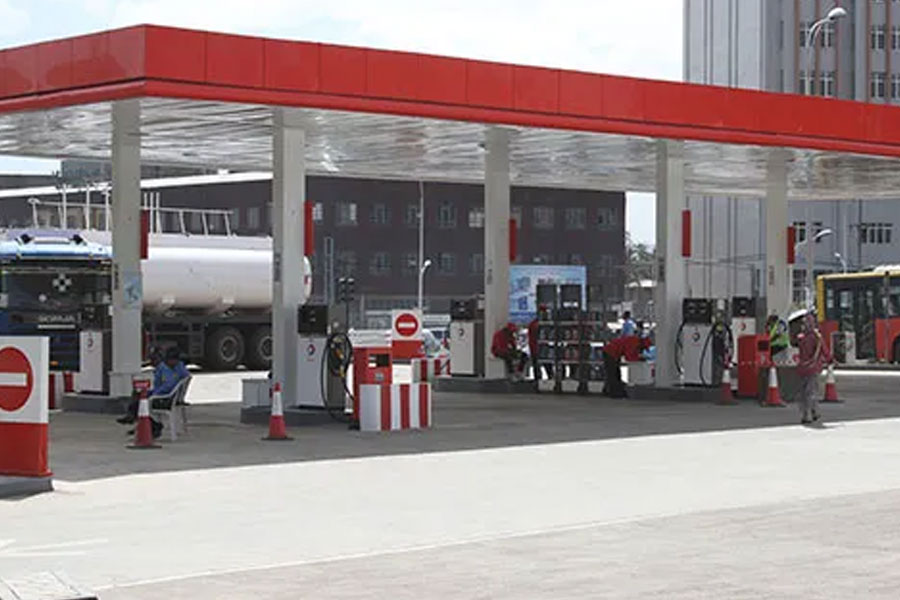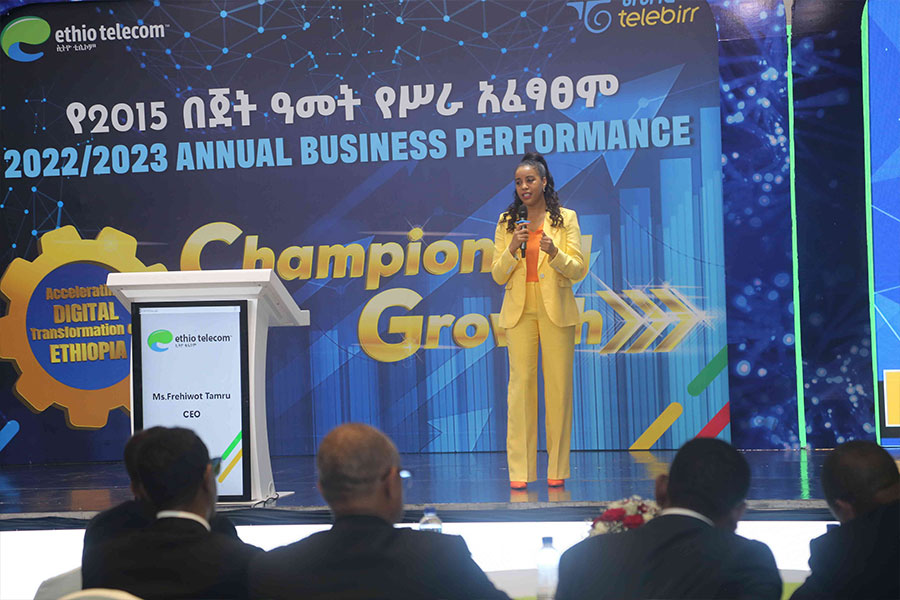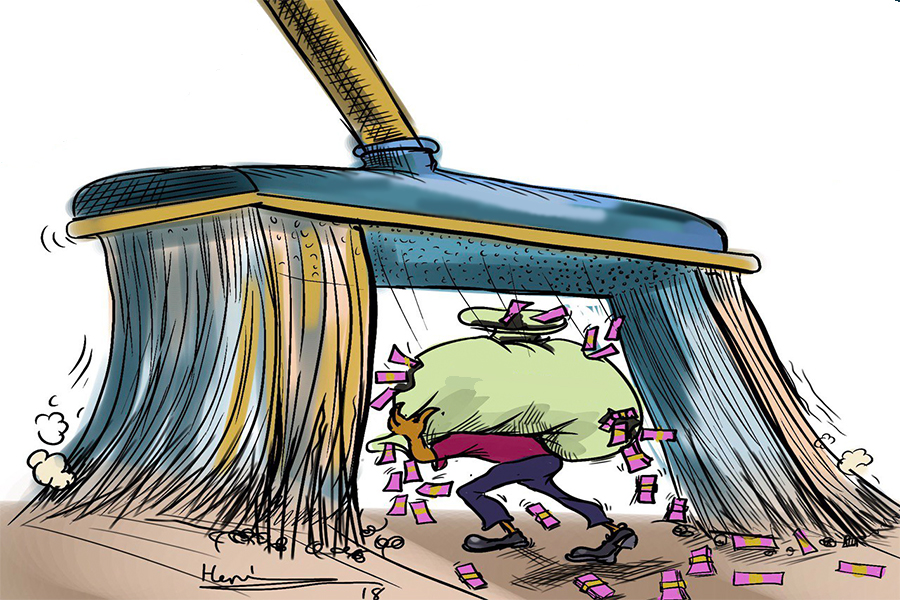
Advertorials | Mar 18,2023
The Addis Abeba City Administration's ambitious urban development initiative is set to expand into other districts with the launch of the second phase of its corridor development project. The new phase will involve a comprehensive transformation of three key districts, continuing the city's drive to modernise its infrastructure and urban landscape. The plan, spearheaded by the city's Plan & Development Bureau, seeks to harmonise the design across various corridors, hoping to create a more cohesive and aesthetically appealing cityscape.
The second phase of the corridor development will be a massive undertaking, part of a broader vision outlined by Prime Minister Abiy Ahmed (PhD), who has declared the need for a "greener, smarter, and more eco-friendly" Addis Abeba.
The study's authors want to see a unified design across all corridors bordering the city, to create a visually appealing urban landscape that confirms with Addis Abeba's future growth.
The study, which deployed spatial data to assess current conditions and identify issues, includes roads and plots in the Bole, Lemi Kura, and Akaki-Kaliti districts. The overriding plan aspires to connect Addis Abeba's urban core with its outskirts, integrating with projects like the Shegger Grand Road. The Prime Minister, announcing the completion of the study during the launch of the CMC corridor two weeks ago, disclosed the ambition behind the project.
"Our plan is bigger," he declared, cautioning the city's officials to avoid complacency following the completion of the first phase of corridor development.
Over the past two months, the city has initiated five corridor projects spanning 48Km. These projects have caused considerable resettlement and demolitions to expand road infrastructure, pedestrian pathways, and bicycle lanes.
The second phase targets several strategic areas, incorporating 4,747hct plots and stretching 43Km. This phase covers areas from Anbessa Garage through Mebrat Hail, Goro, Koye Roundabout, Bulbula, and Airport Cargo. The route will weave through Bole Bridge, moving toward Goro Roundabout and culminating at Summit "Fiyel B'et," CMC roundabout, and Jackross village.
Much of the Bole Michael Cargo-Bulbula corridor is slated to be repurposed for diverse land uses.
Nearly half of the 566.5hct is earmarked for green spaces, including golf courses, sports fields, forests, and an extensive network of parks and recreational facilities. The remaining land is designated to accommodate residential areas, road infrastructure, parking spaces, waste management solutions, and water conservation measures.
The initiative, initially overseen by Dadi Wedajo, the former director of the City’s Plan & Development Bureau, will now be led by the newly appointed Director, Adem Nuri. Dadi has transitioned to a role as a strategic advisor to the Mayor’s Office, signalling continuity in the administration's approach to urban planning.
The second phase will also include the development of taxi stations and public restrooms. New regulations, recently enacted by the Addis Abeba City Cabinet, prescribe a minimum setback standard of 10m from the main road edge for buildings. These regulations are a response to the demolitions during the first phase when several structures were found too close to the roads. The city authorities believe they are taking a preemptive approach to ensure that future developments adhere to these standards, thereby avoiding the disruptions experienced earlier.
Mayor Adanech Abebie noted that the corridor development has not only improved infrastructure but also created 50,000 jobs and enhanced market integration, demonstrating the project's manifold impact. Her administration allocated 33 billion Br for the development of previous corridors across the five districts.
The city officials hope to raise close to 100 billion Br in five years from leasing 1.4 million square metres of land and additional 5.7 billion Br from taxes.
The study conducted for the second phase stresses the integration of existing buildings into the new development framework. The plan includes adding arcades for structures with more than two floors, while buildings with fewer floors will be incorporated into the overall development. However, some structures may face complete demolition to make way for the new infrastructure.
According to experts like Habte Jebessa, a lecturer in conservation and management of natural resources at Addis Abeba University, conducting thorough environmental and social impact assessments before proceeding with such large-scale urban projects remains important.
"While a city has the right to develop and prosper, these assessments are crucial to addressing potential risks and ensuring sustainability for future generations," Habte said. "Otherwise, the cost may be much higher later on."
The Bole Homes-Anbessa Garage-ICT Park corridor is envisioned as a mixed-use urban area, integrating residential, commercial, and institutional spaces. Construction in the Bole District is already underway, with District Chief Administrator Alemtsehay Shiferaw recently visiting the site around Wereda 12. She urged for lessons from the first phase to maintain a high standard of work in the second phase.
The entire development will cover an area of 798.15hct, including mixed-use residential zones, relocation sites, and provisions for roads, electric power stations, bus depots, and high-tension electric lines.
The Akaki-Qaliti District Administration has initiated beautification efforts along the road from Koye Square to Bulbula, a region prone to flooding in recent years. The city Disaster & Risk Management Commissioner, Fikre Gizaw, stressed the urgency of completing the ongoing river rehabilitation project to protect residents and incorporate buffer zones along riverbanks in future construction plans.
The study also recommended integrating other projects, such as OVID Construction's Gelan Gura Village development, industrial zones, clusters, and the ambitious Windows of Africa Project, into the broader development plan.
PUBLISHED ON
Aug 25,2024 [ VOL
25 , NO
1269]

Advertorials | Mar 18,2023

Fortune News | Dec 04,2021

Radar | Jan 18,2020

Radar | Jul 20,2019

Covid-19 | Jun 11,2021

Fortune News | Nov 20,2021

Fortune News | Feb 27,2021

Radar | Jul 24,2023

Radar | Apr 06,2019

My Opinion | Apr 22,2023

Dec 22 , 2024 . By TIZITA SHEWAFERAW
Charged with transforming colossal state-owned enterprises into modern and competitiv...

Aug 18 , 2024 . By AKSAH ITALO
Although predictable Yonas Zerihun's job in the ride-hailing service is not immune to...

Jul 28 , 2024 . By TIZITA SHEWAFERAW
Unhabitual, perhaps too many, Samuel Gebreyohannes, 38, used to occasionally enjoy a couple of beers at breakfast. However, he recently swit...

Jul 13 , 2024 . By AKSAH ITALO
Investors who rely on tractors, trucks, and field vehicles for commuting, transporting commodities, and f...

Nov 1 , 2025
The National Bank of Ethiopia (NBE) issued a statement two weeks ago that appeared to...

Oct 25 , 2025
The regulatory machinery is on overdrive. In only two years, no fewer than 35 new pro...

Oct 18 , 2025
The political establishment, notably the ruling party and its top brass, has become p...

Oct 11 , 2025
Ladislas Farago, a roving Associated Press (AP) correspondent, arrived in Ethiopia in...